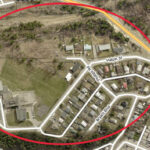Home »

FPB finds forestry under-used in wildfire defence
A two-year investigation by the Forest Practices Board (FPB) has found outdated rules and unclear responsibilities are preventing forestry from becoming a powerful wildfire-defence tool.
The board examined forestry operations from 2019 until 2022 in the wildland-urban interface – areas where communities and forests meet – in the Sea to Sky, Cariboo-Chilcotin and Peace natural resource districts.
“More than one million British Columbians live in interface areas with high or extreme wildfire risk,” said Keith Atkinson, chair, Forest Practices Board. “Foresters are already active in these spaces. With better rules and incentives, their efforts can become part of the wildfire solution.”
It begins with fire hazard assessments, a cornerstone of wildfire risk reduction. The investigation found that 70% of assessments met content requirements. However, fewer than one in four were completed on time. About one-third of cutblocks either failed to meet abatement requirements or required further work to comply on time.
Municipalities, the most populated areas of the province, are excluded from the legal interface, meaning logging debris can remain on site for up to 30 months, even in high-risk areas.
Despite the challenges, the board observed strong examples of wildfire-conscious forestry. In some standout cases, tenure holders completed assessments promptly, followed through with abatement commitments and used wildfire risk-reduction treatments to meet fuel-reduction targets, proof that the knowledge and skills are available.
The board is recommending five actions to the province, all of which aim to:
* encourage forest operators to actively reduce wildfire risk;
* update legal definitions so municipalities are included in the interface;
* improve co-ordination between government, industry and communities;
* modernize hazard assessment guidelines; and
* incentivize faster cleanup of logging debris.
If adopted, these changes would help turn everyday forestry into a proactive wildfire prevention tool, supporting faster fuel cleanup, better co-ordination and more consistent protection for people and communities throughout B.C., the FPB stated in a media release.
“This is an opportunity to improve our policies and processes toward proactive, risk-reducing forestry,” Atkinson said. “It starts with better policy and ends with safer, more fire-resilient communities.”
The full list of recommendations
- Set proactive fire management objectives: Establish proactive fire management objectives in the interface to reduce wildfire hazards, rather than merely prevent hazard increases.
- Improve legal definitions and transparency: Ensure the wildland-urban interface includes municipalities and other high-risk populated areas, and that maps defining the legal interface are publicly available.
- Increase public accessibility of wildfire risk-reduction plans: Create a centralized, public repository for community-scale wildfire risk reduction plans to support co-ordinated action, community advocacy and cross-jurisdictional wildfire risk reduction.
- Strengthen fire-hazard abatement timelines: Require abatement periods to follow an “as soon as practicable” standard to reduce prolonged wildfire vulnerability.
- Enhance fire-hazard assessment guidelines: Revise and update the Ministry of Forests’ 2012 fuel-hazard assessment and abatement guidelines to address current limitations and align with best practices in wildfire risk assessment.
Read the full report, Help or Hinder? Aligning Forestry Practices with Wildfire Risk Reduction.
e-KNOW file photo







